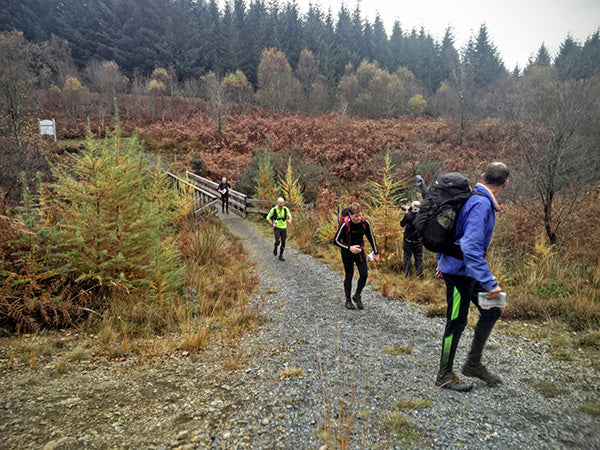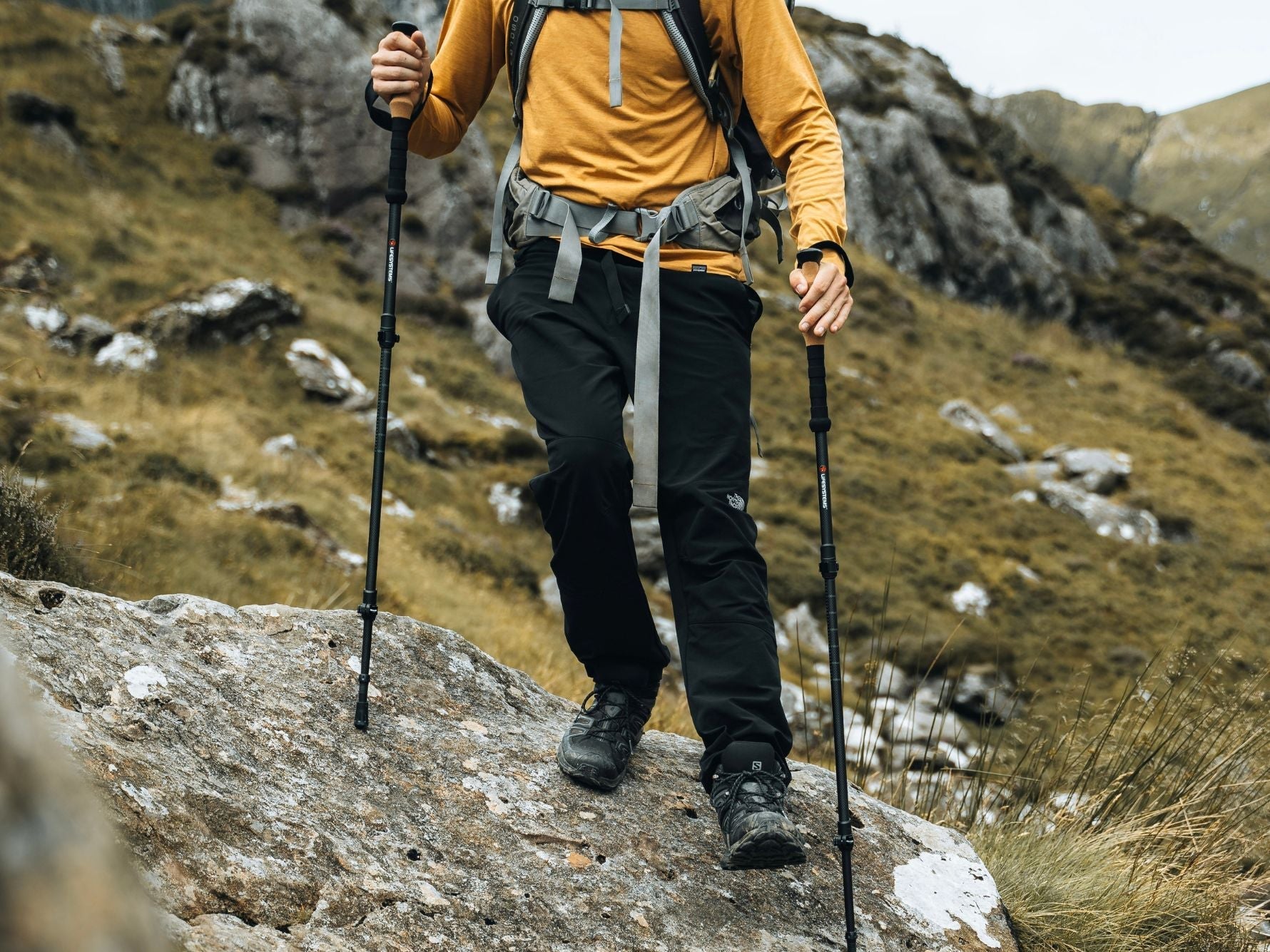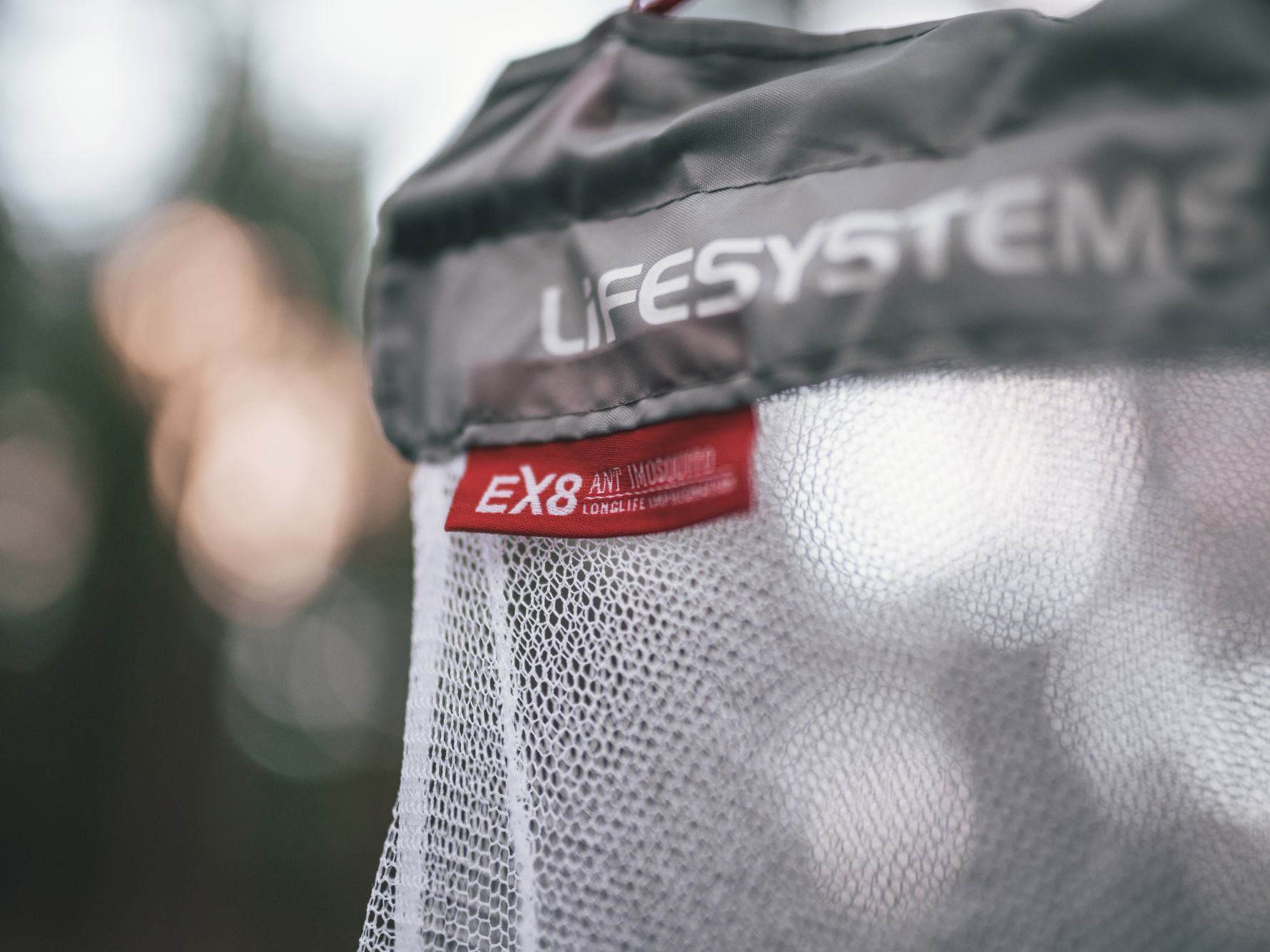Taking on the OMM by Dan Aspel
- Adventurers
- Blog


It’s not every Sunday morning you’re woken up by a 6am bagpiper. But then it’s not every Sunday morning you’re lying in a field of 1,800 people, sandwiched up in a lightweight two-man tent, slightly damp, a little hungry and getting ready to bound, jog and navigate your way across 20km+ of unfamiliar bog, hill and valley for the second day running. But then, as the official literature has it...
“The days are short, the bogs are deep and the rain is relentless that can mean only one thing…… IT’S TIME FOR THE OMM!!!”
The bagpiper really was magnificent. Honestly. I’ve never truly found myself stirred by it as an instrument before, but hearing that single harmonising drone note calling out over the campsite on the morning of OMM Day Two, followed by a pretty passionate half-hour marching rendition of every Scots-sounding folk tune from Skye Boat Song to Amazing Grace… and each one met by cheers from different quarters of the fields… I finally got it. Like drinking whisky in a bothy, the enjoyment is all about context.
The “bagpiper at the gates of dawn” was, of course, just one part of this magnificent event that I’m already excited about taking part in again next year. And it needs very little introduction. The Original Mountain Marathon is nearing its 50th year, and the speed orienteering challenge has spent that half century getting competitors out in the British hills in the wet heart of autumn - spinning its own legends and, thanks to its double-marathon “Elite” class, helping cement some heroes of the fell running scene for that whole half century. You can read everything you need to about its format and rules via this link: OMM 2016
… meanwhile, this blog is going to take the form of the following 22 pictures, snapped whenever I could throughout the weekend, with some explanatory captions beneath each one. So let’s get started...

Hard work on hazy hills… it must be the OMM. Navigating your way across boggy (but beautiful) open ground as fast as you competently can is the key to success, whichever category you enter. Going uphill is the hard bit (and inevitable if you want to make any meaningful progress). This was about two fifths of the way into Day One and I was still rather excitable.

Meanwhile, back on the Friday afternoon… the event HQ for 2016 was based near the village of Glentrool in the Galloway Hills of SW Scotland. It might not look large from this angle, but by nightfall it was packed with nearly 900 two-person teams, all enjoying a pre-race pasta feast and a beer or two. This is also where the teams gathered on Sunday once the race was finished… as you can imagine, the heat, noise and (most noticably) smell was quite overpowering.

Being a typically rainy autumn in Scotland, even the track leading towards HQ was a mud-fest by Saturday morning. Little cause for concern if you know the horrors that are coming later, of course.

Back on the Friday night, race partner Andy Smith studies the bespoke Harvey map of the region taped to one of the communal benches. A bit of study here pays off when it comes to the race: you’ll only be given your check-pointed map on the start line, with a minute or less to study it before the timer starts.

The Galloway Hills aren’t just a lesser-visited feast of bog, loch and contour… they’ve got some absolutely fantastic names too.

For those of you who like Game of Thrones it's a nice place for a White Walker.

The OMM has been held every year since 1968 and has visited a slew of locations from Dartmoor to the Brecon Beacons, Snowdonia, the western Lakes and southern Scotland. That makes for quite a beer mat collection.

Day One on the slopes of Benyellary and looking down towards Kirkennan Burn. Having just bagged a 50-point check point (they all bear different values depending on remoteness and difficulty) at a stream junction in the valley bed, all that was left was to climb up and over this 700m hill, drop down a steep ravine on the other side, tag another lost stream-junction 40-pointer and scrabble through some unbroken woodland on our way to a forestry track that may or may not be there. No wonder Andy looks so happy.

The OMM quickly turns into a weird mix of a) getting irrationally angry at the landscape for being so damned impenetrable, b) getting surging hits of elation when you finally tag a checkpoint and c) breathing heavily. It’s an emotional roller coaster out there.

A mere 10 points for this one, but there’s (almost) no sweeter feeling than navigating your way via map, compass and pace counting to a flagged up checkpoint by a cairn in the middle of nowhere when the fog and mist is down.

Tagging a checkpoint involves beeping your wrist-mounted dibber like so. It’ll then be downloaded and cleared at the end of each day’s course. As every team has to be made up of two people (no solo entries here) the trick is to get your race partner to take on dibber responsibilities at race registration. Attached by a wrist leash, once it’s on it’s not coming off… and it means marginally more work for them (and thus slightly less for you) on the trail. Insert smug face here.

Holding the OMM at the very end of October more or less guarantees these kinds of conditions in the Scottish hills. The use of any kind of Sat Nav is banned, so you’re going to have to be fairly “on it” with your compass skills if you want to, a) get a meaningful score, and b) make it to the finish line before darkness falls...

Day One’s print out, giving a detailed breakdown of which checkpoints were tagged and when. Some interesting points here. Firstly, we were on roughly a third of the number of points as the leaders (which gives some impression of how competent a field this is) but were still around halfway up the table - which is good for morale (we’d eventually finish 50th out of 113 teams). Secondly, you’ll notice that we were docked six points for being 2.5mins beyond our 5hr time limit: you lose two points per minute for being late in the “Score” categories, making punctuality a big deal. Thirdly: this makes fun reading in your tent, a necessity since you have to carry overnight gear, food and emergency equipment for 36hrs in the hills in order to compete and don’t want to burden yourself with any reading literature.

A timer on your wristwatch makes for a handy tool in the OMM. Particularly in the “Score” categories, which rely upon tagging as many checkpoints as possible and reaching the finish line in a finite timespan. The “Linear” courses are far longer - ranging up to 40km+ per day - but give competitors set checkpoints to reach in a set order (although with the exact route up to them) and with the quickest overall time winning, thus having a more traditional race format.

The waters of Loch Trool - a great appeal of the race is that you’ll spend two days travelling through some utterly beautiful mountain landscapes.

More lowland bog hopping. You’ll find yourself looking for hidden checkpoints and possible shortcuts in knotty landscapes such as this.

Nearing the finish line on Day Two. Although all eight categories involve different checkpoints, routes and timings, the finish line is the same for everyone on both days - creating an exciting funnel effect for the climactic moments of the race.

Andy’s finish line face. He’s seen things you people wouldn’t believe.

Map, compass, backpack, grin: four things that were more or less constant during my two days on the OMM. Apart from the grin.

Elation on having completed our first ever OMM. This would soon be replaced by a warm glow, then hunger, then sleepiness, then stiffness.

A typical sight on the finish line: an exhausted but happy partnership posing for a victory shot.

Did I mention it was muddy?
Make sure to visit the Lifesystems Facebook page and Twitter feed to share your own experiences of the OMM, trail runs, adventure races or other challenge events, whether at home or abroad.
And hopefully see you on the start line for OMM 2017!
Dan Aspel is a journalist and Mountain Leader. You can find him at www.danaspel.com
Visit www.lifesystems.co.uk to find a host of kit and equipment for your next challenge event.



